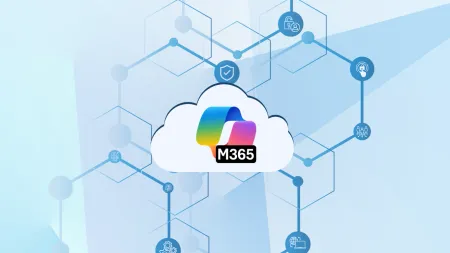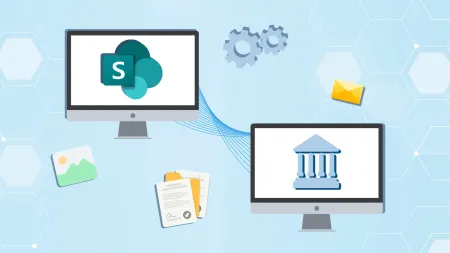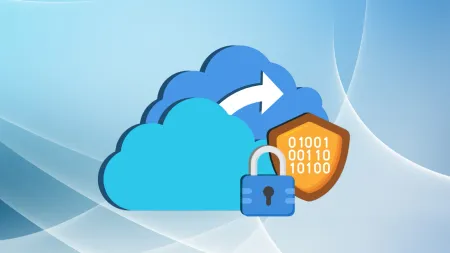Make the Move From Webmail to Office 365 Hosted Exchange
If youre unsatisfied with your current webmail host or want to see what else is out there you should try migrating to Office 365 hosted ExchangeYo...

If you’re unsatisfied with your current webmail host or want to see what else is out there, you should try migrating to Office 365 hosted Exchange. Your IT administrator can migrate email from different email systems including contacts and calendars to an Office 365 mailbox. You could also work with an experienced consultant to help you migrate right the first time. Before you begin, it’s important to review the features and functionalities that Office 365 offers. Exchange Online has certain limitations, so make sure you know your requirements to ensure you get what you need and expect from your email.
Moving to Office 365 Hosted Exchange
Select a migration path
After deciding to make the move to Office 365 hosted Exchange, you need to choose a migration path for your mailboxes to Office 365. An Office 365 global administrator can perform the migration from Exchange or other email systems to Office 365. Migrating from your current on-premises Exchange Server is fairly straightforward. You can migrate calendars, email, contacts and even tasks. You can do this in a staged, Exchange Hybrid or cutover type of migration. These methods will copy everything over into Office 365.
Import PST files
You can use Office 365 Import Service to migrate emails saved in a PST file. Files can be shipped or uploaded over a network. If you have a large of amount of data, however, shipping your drives may be faster than attempting to upload them over a network.
Migrate email from third-party vendors
If you use Lotus Notes or another third-party vendor as your current email provider, you should consult with a Microsoft partner for your Office 365 migration options. Your partner can help you evaluate the requirements to seamlessly migrate to Office 365 hosted Exchange. You may wish to consider migrating data from your previous email to an enterprise-level system that connects into Office 365. This is possible through a variety of products, but your Microsoft partner will know the best option for this type of migration. Some mailboxes can be ingested into an archive tool as part of your Office 365 migration, but this requires your mailboxes to be set up on Office 365 yet residing on your legacy archive. If you are a small business, you can have your users import their own mailboxes, contacts and other information. If you want to move data from Gmail to Office 365, you will need to use a copy of Outlook installed on a local machine. This is a gradual process to move Gmail to a desktop to the cloud. While this sounds slow, imagine the time your administrator will save by providing instructions to every user and having them perform their own migration.
Using the Exchange Admin Center
The Exchange Admin Center can help you migrate data from Exchange Server 2003, 2007, 2010, 2013 and IMAP. This tool is used to migrate data from hosted and on-premises Exchange by creating and managing migration batches, which are requests to migrate all your mailboxes from a remote location. Administrators can manage several migration batches with the Email Migration Wizard in Exchange Admin Center through the Online PowerShell. Administrators can also set the stage for multiple migration batches ready to execute and control these batches when they have started.
What about domain names?
One looming question is: How will the migration to Office 365 hosted Exchange affect your domain names? The way domain names are affected will depend on whether you select an on-premises Active Directory or identity federation. For instance, if you wish to keep using hosted Active Directory but want to eliminate implementing identity federation, you can use partial redelegation. This is one way to handle domain names in Office 365. Your business still retains the ownership of the domain, but email and web hosting get redirected to Office 365 servers. This process is relatively easy to complete.
Begin in the Cloud
As long as your current email does not have a dependency on Active Directory, you can migrate from an on-premises deployment. The interface allows you to create user accounts directly in Office 365. It’s not recommended to do this if you are performing a directory synchronization. User accounts can be created through the web-based wizard singularly, however, through the administrative console, you can create accounts in bulk with a CSV file that already contains the account information. Regardless of your path to Office 365 hosted Exchange, the platform provides the security, low maintenance and mobility you need with business email. However, the cloud migration specialist you choose matters. You need an experienced migration partner to helps make Office 365 work for your business as it grows and changes. As an award-winning Microsoft cloud partner, Agile IT can be your trusted resource for unlocking the benefits of Office 365 for email and beyond. Learn more about our Office 365 migration services or request a quote today.





